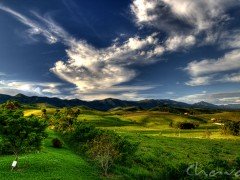
A wise choice of image format before taking your shots will decide the flexibility and the control you will have over the final result. Let’s put a few things in perspective first. JPEG or JPG is an image format devised by the Joint Photographic Experts Group. Pronounced “J-peg”, it is a compressed and lossy format thus giving you a image that is smaller on storage (not resolution). The JPEG format depends on the shortcomings of the human eye to do away with some of the details in an image.
The RAW format on the other hand is literally the raw data captured by the camera sensor. To be precise, it is the minimally processed data captured by the camera sensor and holds information of every pixel of the sensor. RAW files are huge in size since they hold a lot of data in an uncompressed format (not actually true since some RAW formats do compress minimally). So where does this leave us?
Image Quality
- JPEG is lossy. The loss may not be evident at the first conversion, but when you digitally modify the image and save as JPEG again, the changes will be apparent.
- RAW is lossless. No matter how many times you read and save the RAW file, there is no loss of the image quality.
Image Size
- JPEG is compressed. This results in a smaller file size at the storage level though the measurements of the image area remain the same. Shoot JPEG when you are running low on storage.
- RAW is uncompressed. Each RAW file eats up several megabytes of storage. If you are carrying extra storage you will want to shoot RAW.
Post-Processing
- JPEG is lossy and results in the loss of detail on every save. However JPEG is a standard format and can be read by the majority of imaging software. The post-processing required is none or minimal.
- RAW is a proprietary format and depends of the camera manufacturer. For instance Nikon’s RAW files are known as NEFs. Check out this article to know more about Nikon NEFs. Though RAW plug-ins exist for software like Photoshop (Adobe Camera RAW), they are generic and do not necessarily allow you to get the best out of the RAW image. You’ll need to use a proprietary software (Capture NX for NEFs) to get the exact color rendition and details.
Shooting Speed
- JPEG files are small in size and can be written to the storage very quickly. The camera buffer gets freed very quickly and the camera is ready to shoot the next image in continuous mode (given that you are not waiting for the flash to recharge).
- RAW files are large in size and take time to be written to the storage. The camera buffer is occupied during this time so if you are shooting in the continuous mode, the fps or frames-per-second rate drops down.
Image Control
- JPEG format contains the final image which is arrived at after all the processing has already been done inside the camera. Suited when you don’t want to do much post-processing.
- RAW is well raw. You can open it up in its software and you have access to all the controls and various parameters. Its virtually like being able to take the shot again — you can vary the sharpness, exposure, contrast, brightness and a whole range of other parameters. This comes in very handy when you don’t want to miss a particular shot — you can open the RAW file and do any adjustments that you couldn’t do then.
I generally shoot in RAW and I delete images all the time trying to retain only the best. Even when I’m out shooting I make sure I have enough storage and I shoot in RAW. JPEG is only a last resort if I risk missing a particular shot.
Which image format do you shoot in?


This was informative, many times people tried to explain RAW to me and never provided a correct explanation or reasoning why it is better. I am taking courses in photography now, and this article convinced me to start shooting in RAW, especially since I enjoy creating vast different images on photoshop.